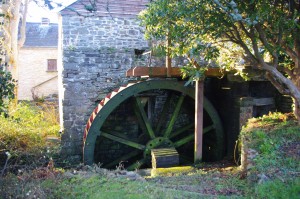Here’s the abstract of a chapter to be included in the forthcoming volume titled Literature and Sustainability (eds L Squire, A Johns-Putra, J Parham) Manchester: University Press. H Thomas, R Marggraf Turley, J E Archer. 2015. The millers’ tales: sustainability, the arts and the watermill.
H Thomas, R Marggraf Turley, J E Archer. 2015. The millers’ tales: sustainability, the arts and the watermill.
In the relationship between the arts and sustainability, the watermill is important, but often neglected. Frequently sentimentalized and abstracted from its historical moment, the watermill was the point at which food entered most transparently and immediately into the world of politics and governance. It was a complex institution within which communities were created and negotiated, through cultural as well as material relationships. The present essay tells the stories of four watermills, actual and (re-)imagined: Trumpington Mill in Cambridgeshire, setting for Chaucer’s Reeve’s Tale (c.1390); Flatford Mill in East Anglia, often associated with John Constable’s 1821 painting now known as ‘The Hay Wain’; Dorlcote Mill, home to the Tulliver family in George Eliot’s The Mill on the Floss (1860); and Felin Ganol in Llanrhystud, Ceredigion, a building with medieval origins and recently restored to working order by the owners. The stories of these watermills, their loss and recovery, mediates important (sometimes inconvenient) truths about our fraught relationship with the land and remind us of the central role of the creative arts in reimagining alternative, more sustainable interconnections between land, water and communities and the food chain they support.
